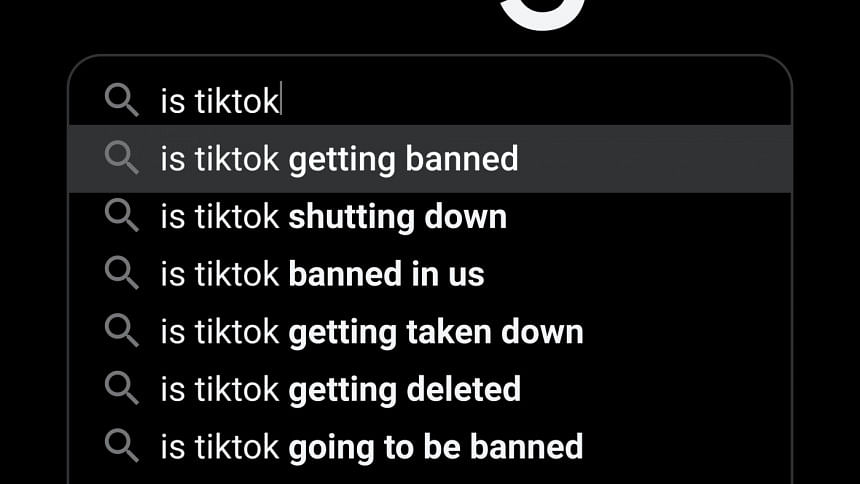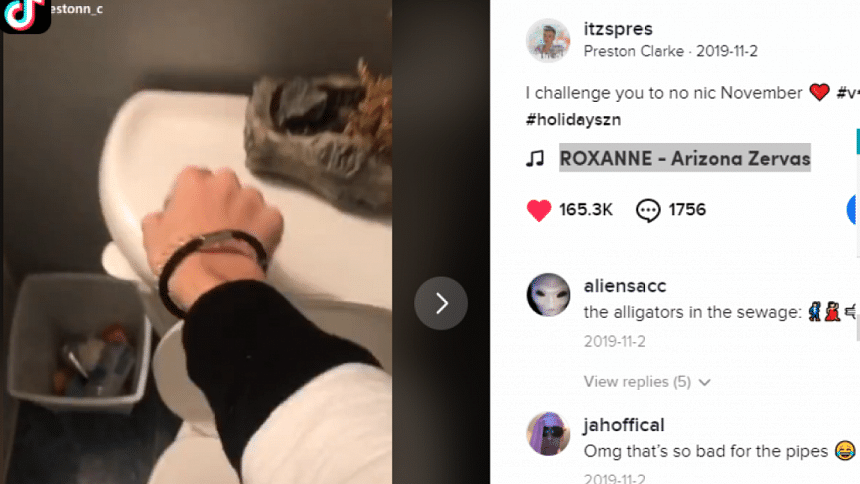The rise and fall of TikTok

Samira and her friends had not seen each other in almost a month and a half. A few days after, Samira saw a short 30-second video sent to her by her cousin mimicking and lip-syncing an iconic Indian film scene. It was not Vine or Musical.ly, it was TikTok.
"I heard of TikTok before, and it did not seem appealing in the beginning. However, when I saw this snippet of an iconic film scene of my cousin lip-syncing Shashi Kapoor's iconic, "Mera Paas Ma Hain" scene, I thought of sending one to my friend, Afra and since then, we all started to lap up videos online and started to make group TikTok videos which turned out to be fun, a little cringy, and a lot more entertaining than expected", remarked Samira when asked about her interest in TikTok.
Samira's story is one of the thousands clustered in the mosaic of videos, comic snippets, dance routines, and other wide ranges of content that have led to the sudden interest in TikTok amidst the raging pandemic. TikTok seems to have found its niche during the quarantine period with a large segment of the population, both teenagers and elders alike, who have been relegated to the confines of their own houses with not much area of movement from the radius of their location.
Statistics-wise, the Chinese app has surpassed 2 billion downloads and has set a record for app installs in a single quarter across all platforms, according to the app analytics firm, Sensor Tower. With 315 million new installs since January, this is reportedly the most downloads for any app in any quarter.
The main reason behind this massive growth in popularity is due to the manner in which people of all ages and occupations use this application to connect with others. The app offers a vicarious approach to engaging with the outside world, especially with friends, family, and loved one through engaging and funny content bridging the gaps of distancing prolonged by the pandemic.

Eking out the social life
It is not an uncommon trend to not open social media and come across an untrammelled string of viral short-form videos. TikTok has breathed in a completely new possibility of whiling away one's time other than having meetings on Zoom or chilling with Netflix. While both of the latter activities are primarily connected to work and solitary leisure hours, TikTok acts as a portal of unlimited creative pursuits through dancing, lip-syncing, and memes.
One of the most conspicuous TikTok videos in circulation has been the viral and beguiling "Don't Rush Challenge" where everyone throws a makeup brush to one another and then changing themselves into a stylish version of themselves. Videos like these usually just under a minute showcase the restructuring of real life into bite-sized content punctuated with an outburst of energy and thrilling music in the background. While online hangouts can become tiresome for a while, this helps many to be in touch with the outside world through dressing up well, planning a plan with friends, and then finally putting it into action.
With the passage of time, the endless scrolling of TikTok videos has also paved the way for TikTok influencers to burst onto the scene with many constantly sharing their videos, as a testament to the brewing creativity that is allowed to be showcased through the app.
TikTok's parent company, ByteDance, based in China, in recent years, has invested heavily and made major advances in artificial intelligence. What further contributed to TikTok's emergence of outreach was its merger with another social media platform, Musical.ly making TikTok a worldwide phenomenon. TikTok itself comprises of a social network that has nothing to do with one's social network. TikTok is a hub of creativity allowing the user to tune into any soundtrack of choice and make malleable content as one pleases. Perhaps, this has contributed to the rise of this app particularly during this time given its length of content and aptitude to convert reality into the content of one's choice.
TikTok was already popular before coronavirus albeit having been banned in a couple of countries due to the nature of content some of its users used it for but the lockdown has supercharged it making it the easiest and funniest way to reconnect with friends and loved ones.
Sustaining the rise
As much as we are currently facing a pandemic, we are also prone to a tsunami of misinformation. TikTok recently had an enhanced in-app reporting feature embedded into its system. TikTok users can now report content that appears to be intentionally and maliciously deceptive within the app helping to stem out the flow of misinformation in one of the most-used apps right now.
TikTok is primarily an indoor platform and has been a mediator of knowledge exchange and source of positivity during such troubled times. Countless handwashing videos saturated with dances and catchy music have been made to alert all the viewers on the importance of health and hygiene, which are instrumental in combatting the pandemic, which until this point has not seen a ray of light when it comes to a cure.
TikTok has also opened up pathways for both creators and fans alike to donate to their favourite charities with sticker options of the charities showing up. This is mainly allowed in the US, UK, France, Germany, and Italy.
Aside from the fun and jolly headlines, TikTok has also been caught up in diplomatic bushfires with the Indian government banning the app. Happening in the light of Indo-China crisis, the app has been accused of the flow of untrammelled data into the hand of the Chinese government, an issue which has not risen for the first time. This has abandoned the usage by a large population of Indians who harken to use an alternative app. As its popularity grew more and more amongst Indians, the twists and turns of diplomacy have made it lose perhaps its biggest boon – reliability.





Comments